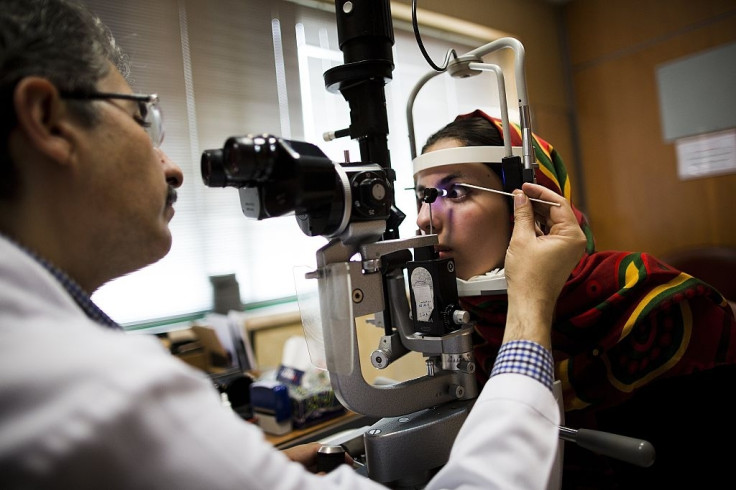This teen has created an affordable AI system to speed up the diagnosis of diabetic retinopathy
The system uses a 3D printed lens and an AI powered app to cut short a 2-hour-long diagnosis procedure.

Kavya Kopparapu, a 16-year-old high-school student has invented an AI-based system, called Eyeagnosis, to detect diabetic retinopathy - a complication of diabetes that damages blood vessels in the retina and often leads to blindness.
Considering the medical condition of her grandfather who was treated in the final stages of the same disease, Kopparapu started working on Eyegnosis to change a two-hour long diagnostic procedure requiring a multi-thousand-dollar retinal camera into something as simple as snapping a photo.
"The lack of diagnosis is the biggest challenge," Kopparapu says. "In India, there are programs that send doctors into villages and slums, but there are a lot of patients and only so many ophthalmologists."
Then, after months of data collection, AI-training and testing, the science enthusiast and her young team - her 15-year-old brother and classmate - presented the system at the O'Reilly Artificial Intelligence conference last month. The system used a 3D-printed lens and an AI-enabled smartphone app that recognized signs of diabetic retinopathy in photos of the eyes.
This lens first uses the phone's diffuse, off-centered flash to illuminate the retina and deliver high-quality scans. Then, an app bundled with Microsoft's machine learning architecture - ResNet-50 - performs diagnosis by comparing the retinal images with an existing set of data carrying over 34,000 images. The app not only detects the disease but also highlights blood vessels and microaneurysms in an image—a process that normally involves injecting a fluorescent dye into patients' blood.
Kopparapu tested the first prototype of Eyegnosis on five patients in Mumbai's Aditya Jyot Eye Hospital and in each case, the system delivered 100% accurate results.
"The device is ideal for making screening much more efficient and available to a broader population," says J. Fielding Hejtmancik, an expert in visual diseases at the National Institute of Health, which provided the database for Kopparapu's AI system. "These kids have put things together in a very nice way that's a bit cheaper and simpler than most —who, by the way, all have advanced degrees!"
Hejtmancik believes in the commercial potential of the project but notes that it is still far from clinical adoption. "What she's going to need is a lot of clinical data showing that [Eyeagnosis] is reliable under a variety of situations: in eye hospitals, in the countryside, in clinics out in the boonies of India," he said.
16-year old @KavyaKopparapu built a #MachineLearning diagnosis system for diabetic retinopathy https://t.co/xVNDjjAjSw Wow! 👠#girlpower 👩â€ðŸ’»
— Women in ML/DS (@wimlds) August 4, 2017
© Copyright IBTimes 2025. All rights reserved.





















